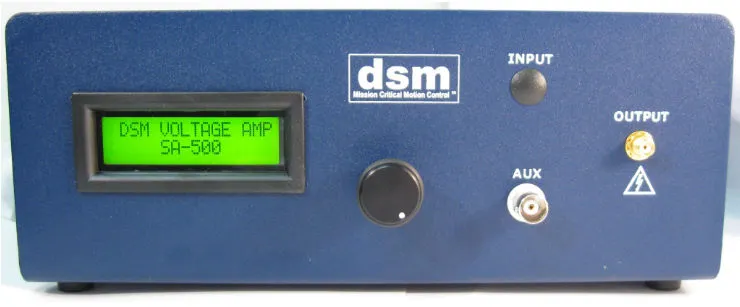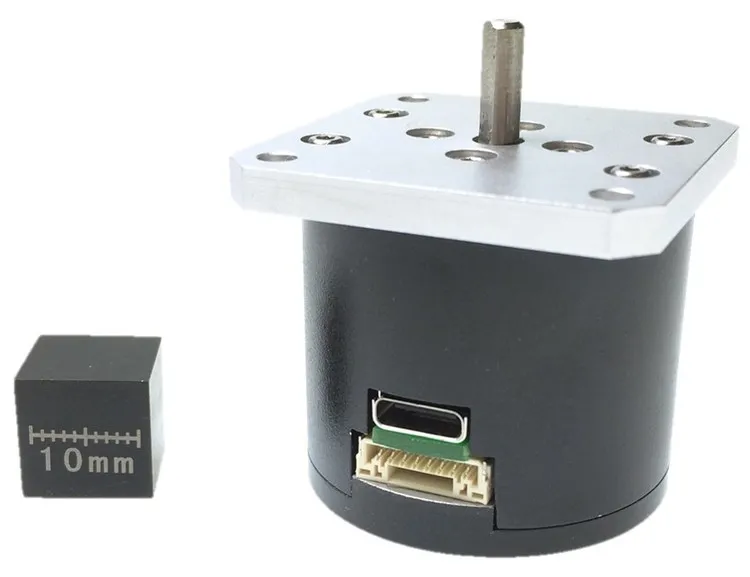Piezo Drivers
Systems using piezo devices require specialized drive and control electronics. DSM offers electronics that provide amplified voltage signals and closed-loop control. We also provide custom circuit design services for piezo-based applications.
Choose a Product Category
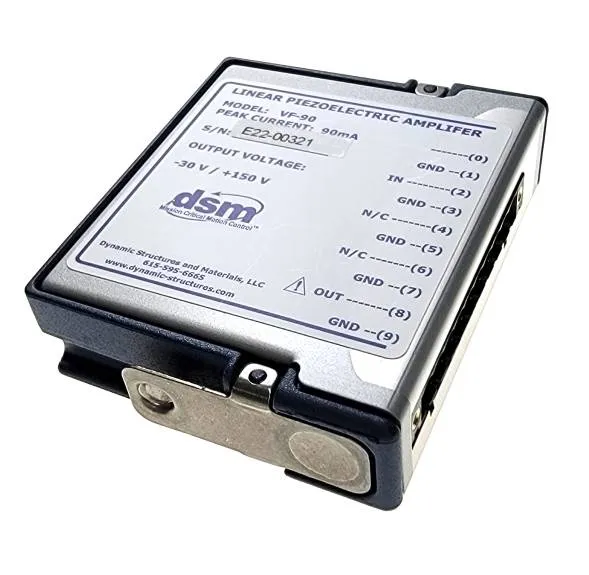
Linear Amplifier
Position Linearly Controlled by Amplified Voltage
- For driving piezo actuators and stages
- Closed-Loop Options
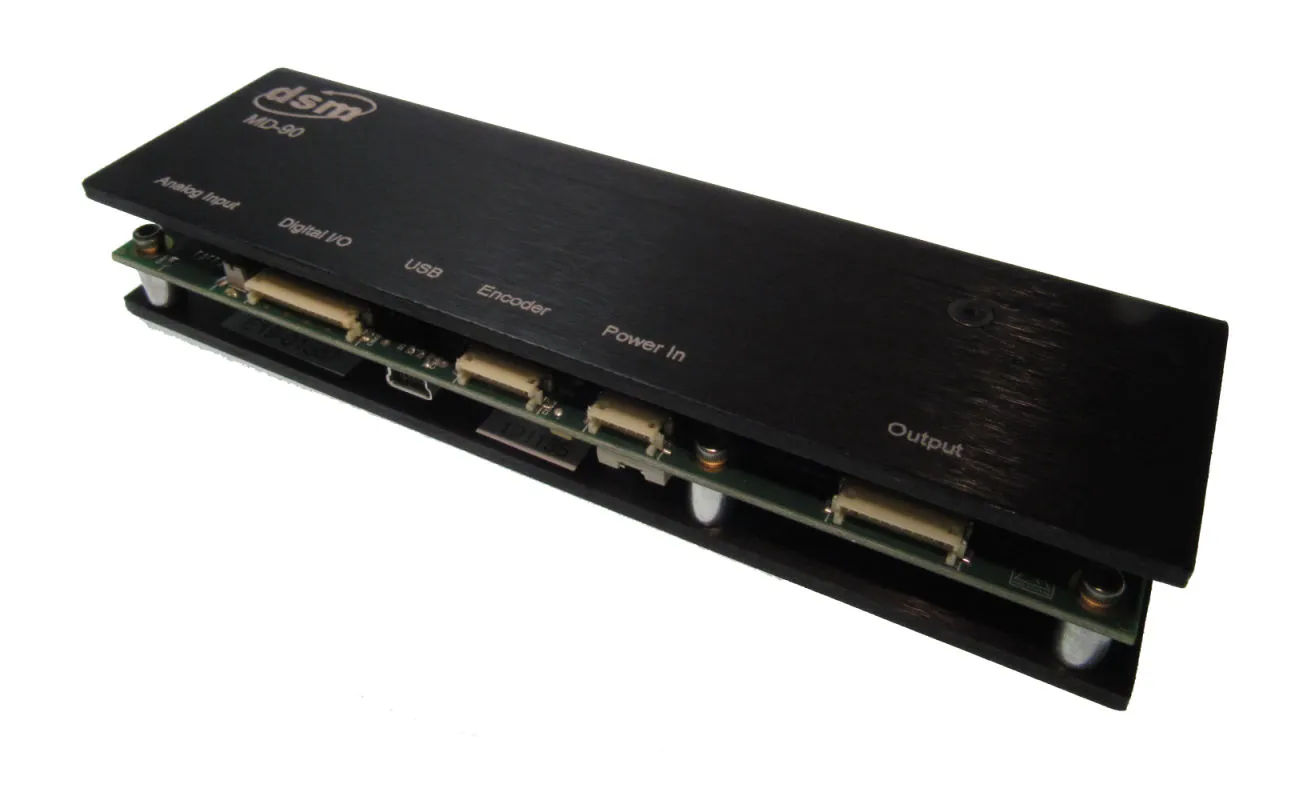
Motor Drivers
Positioning in Discrete Incremental Steps
- Designed for use with I-20
- Closed-Loop Options

Ultrasonic Motor Drivers
High Frequency Excitation Signals
- Designed for use with SUM-40NM
- Signal amplification, frequency, and phase control
5 ready-to-order models are available. Contact us for customized solutions.
Linear Amplifiers
Linear amplifiers are used to drive piezo devices that expand linearly when energized with a voltage. A small input signal is amplified to voltages in a typical range of -30V to 150V. Pairing an amplifier with a feedback sensor and controller allows for high accuracy control, mitigating the position change inherent to a piezo device. Low noise on the output increases the precision of the driven actuator. The output voltage can be adjusted by adjusting the rail voltages generated for the amplifier.
Motor Driver
DSM piezo motors require internal coordinated moves to perform external travel. The motor driver must generate two amplified signals and be able to control them relative to each other. Position resolution is typically limited by the motor step size. With custom hardware/software resolutions between the step sizes are possible.
Ultrasonic Motor Driver
DSM's ultrasonic motors (USM) use high-frequency vibrations get rotational motion. A USM driver must generate high-voltage AC signals and be able to control the frequency and phase of both of these signals for high performance.
High Accuracy Using Closed-Loop Control
Piezo devices have inaccuracies from temperature drift and positional hysteresis. Using a position feedback sensor mitigates inaccuracy and allows for a precise positioning system with high repeatability. DSM integrates closed-loop control systems and high-voltage piezo driving electronics into a single unit.
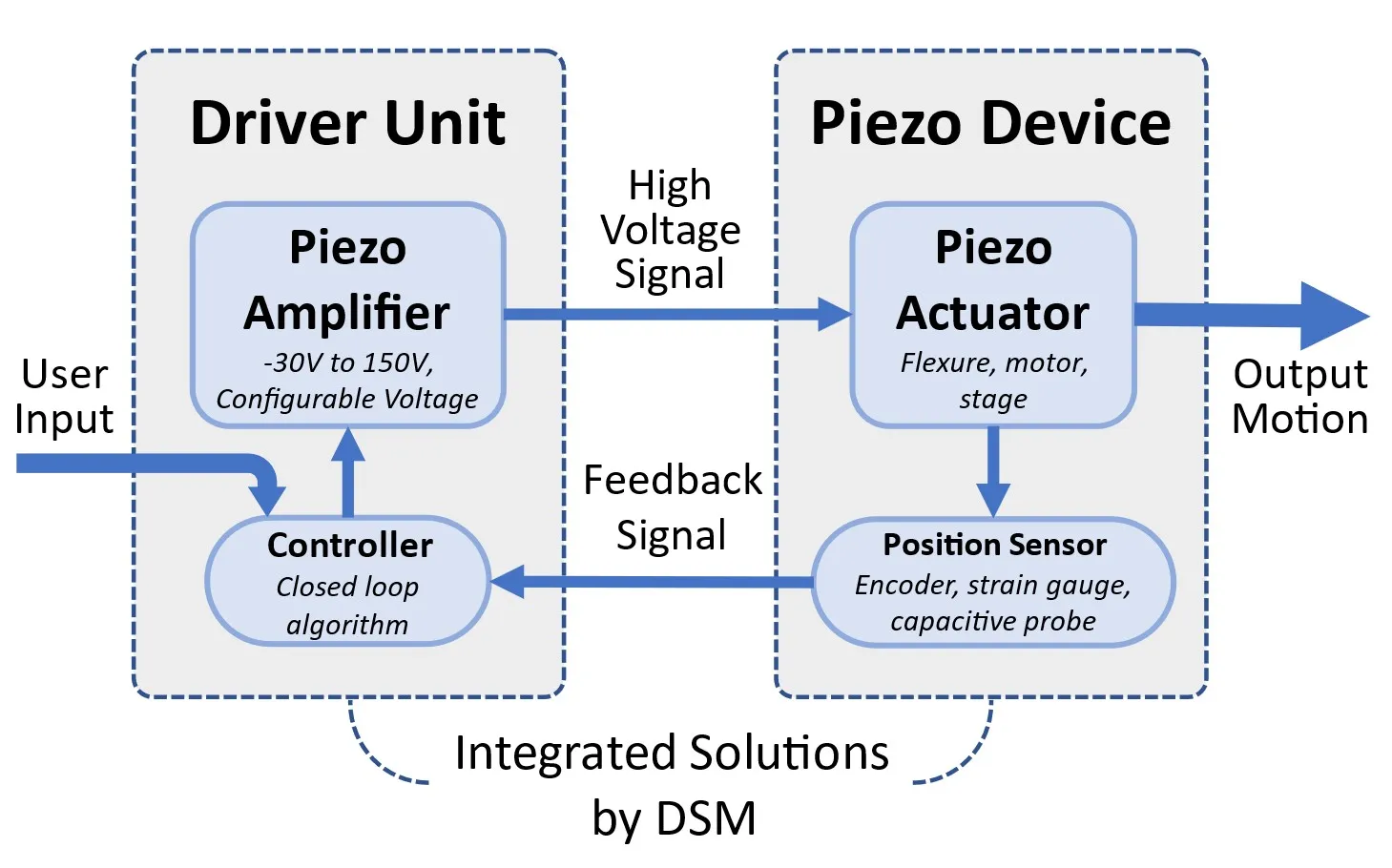
Examples of Closed-Loop Electronics
• See SUM-40 for ultrasonic motor and driving electronics in one package
• See SA-500 for closed-loop linear amplifier with analog feedback
• See MD-90 for closed-loop motor driver with quadrature feedback
Contact DSM for more closed-loop control options
Four Things a Closed-Loop Piezo Driver Needs
Piezo devices may have the precision required for your application, but a complete system for driving piezo system requires several parts.
High Voltage Power Supplies and Signal Amplification
A typical piezo device needs an output voltage of -30VDC to +150VDC, which requires a high-voltage power supply and signal amplifier. Heat dissipation quickly becomes a factor in the amount of current the driver can deliver. Current limiting circuitry is helpful in slowing quick transitions, so that the amplifier is not damaged.
Low Noise on Driver Signal
Noise on an output signal limits the precision of the position that can be achieved. The less noisy the output signal is, the more precise the position can be. Low noise on the output also means that the input signal must be low noise or filtered. Closed-loop systems provided by DSM use a DAC to generate a signal internally, while open loop systems require the user to apply their own input signal.
Feedback
Position feedback sensors, such as encoders, strain gauges, eddy current probes, or capacitive probes can be used to “close the loop,” mitigating inaccuracies inherent to piezo devices and allowing precise positional control. Integrated feedback requires circuitry to handle the sensor signals and decision-making software to make measurements and to adjust the output to achieve the desired position.
User Interface
DSM provides software for operating our closed-loop systems. Many systems only require a single connection and a terminal program to communicate, allowing the user to configure the driver for their own application.

